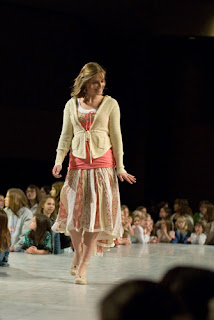Her post on a recent project seems to have sparked a lot of interest in a discussion / commenting of modesty in general. So, her post on modesty is seen from a feminist point of view and does not take into account that the survey she slates are not commands, but statements that men / boys reacted to. I think the most revealing results are the open questions that the boys / men answered which show the actual heart of Christian men and their struggles.
The one criticism that came through strongly on the sewing blog comment section, was that women were not asked the same questions as well as questions about men's attire. I think that is a valid point, but when we think about it, women will dress modestly if men don't accept immodesty as a standard and vice versa.
What I read recently in Dr James Dobson's book "Bringing up Girls" is that girls think they are in control when they get the attention of the boys and then sleep with them, because they feel loved. However, the cycle continues if this happens more than once and the more it happens, the less loved the girl feels. The reason for this is, the boys get what they want without commitment and girls get nothing except pain. Dr Dobson makes the point that this is the worst form of male power, even though girls think that they actually are empowered.
Gertie confuses modesty with morality and religious superiority. This is something even Christians do. We can come across as being more spiritual, more moral or even show our superiority by the way we act, but in essence that is not the main point. Gertie argues that modesty is linked to religion and culture and she is correct, but at the end of the day, the question remains: Are we more moral when we can dress the way we want and even go without or entice men's minds to lust after us? Is modesty only one-sided and placed as an oppression on women? I have addressed this issue before.
I think Gertie misses the point of modesty in general - it's not only women who need to dress modestly to protect the visual minds of men, but also men need to dress modestly to curb the imaginations of their female friends. It goes both ways and mutual respect is at the heart of it - "love your neighbour as yourself" and "treat every older woman as if she were your mother and every younger woman as if she were your sister". No wonder that Gertie finds the underlying ideas disturbing, partly I think because they are religious in nature and partly because only men took part in the survey. I think her last point:
[...] that doesn't give any of us the right to demean other women for choosing to show more skin. And, above all, we deserve respectful treatment from men no matter how we're dressed.is on judgmental attitudes in all of us. As Christians we need to be really careful of that no matter whether it is on dress styles or on beliefs or on lifestyles.







